Three-engine hawk "Reggia Aeronautics". Part II. World recognition
The newspapers almost did not write about the military use of S.79 in Spain - the Italians did not particularly extend to military assistance, however, like other participants in the conflict. In the late thirties, record triple three-engine Savoy flights became much more famous.
Marchetti's high-speed aircraft was ideally suited for fascist propaganda and proof of Italian power aviation. Two aircraft of the second series at SIAI were specially equipped for record flights with new 1000-horsepower engines: Fiat A.80 RC.41 was installed on one, and Piaggio R.XI RC.40 on the other.
This pair of planes was handed over to the 12 regiment, setting the crews task of breaking international speed records. Record S.79 differed from the bombers not only by engines, but also by coloring - they drew three green mice on their fuselage. The meaning of the picture in the Italian verbal circulation - green mice mean something impossible, unbelievable. Thus, the Italians hinted that S.79 is simply fantastic in its characteristics by plane.
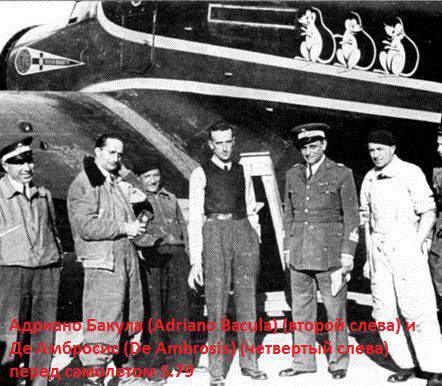
The record flight took place in July 1937, when the Hawk with Piaggio R.XI RC.40 engines took to the air the commander of the 12 regiment Col. A. Bizeo together with his son Duce B. Mussolini. The aircraft traveled a closed distance in 1000 km with an average speed of 423,6 km / h, which was a record for flights with a load of 500, 1000 and 2000 kg. In November, Bizeo and Mussolini brought this result to 430,6 km / h, and then the same plane, but under the control of Bakula and Ambrosis, shows the average speed already in 441,1 km / h.
Interestingly, after these flights, the Italians released a film shot in the best traditions of official propaganda. It assured viewers that all records were set by an ordinary serial bomber, which also flew with a full combat load.
The next in the family of "seventy-ninths" should have distinguished five S.79С, built on the order of the Ministry of Aeronautics in the spring of 1937 of the year. The aircraft were intended for the transatlantic race to New York - hence the letter "C" in the designation ("sogza" - the race). The S.79C was equipped with Alfa Romeo 126 engines, like serial bombers, but did not have a “hump” behind the cockpit and the lower protruding scorer gondola. True, the Americans did not have time to prepare for the reception of participants in the flight, and the race across the Atlantic did not take place.
It is not surprising that when the National Aero Club of France announced the holding of the international aviation race Marseille - Damascus - Paris, the Italians were one of the first to send an application for participation, hoping for their S.79С. On the fuselages of the five S.79C, red stripes were drawn and the already well-known trio of green mice (which became the emblem of the 12 regiment) were painted.
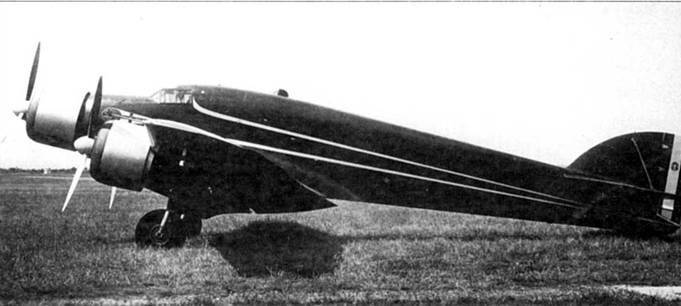
The race started in August 1937 of the year near Marseilles, and all six Savoy went one after another into the air. After six hours, they landed safely in Damascus, showing the best average speed among all participants - 418 km / h. For comparison: the result of the English "Comet" D.N. 88 was only 349 km / h, and the best French plane could not even go abroad at 300 km / h.
The second stage of the flight to Paris also showed the complete advantage of the Italians. And although during the take-off from Damascus, one aircraft was damaged, the other five Savoy safely reached the airfield, taking the first three places. The Parisians were the first to greet the crew consisting of R. Kupini and A. Paradiei, who showed the 17 time of the 35 hours of minutes. On 22, the minutes were behind the winner, U. Fiori and D. Luccini, and the third winners - A. Tondi and B. Mussolini.
After the race Marseille - Damascus - Paris four S.79С were upgraded to version S.79Т (transatlantic) for the flight to South America. Aircraft received additional fuselage tanks, more modern radio equipment and autopilot. In January, 1938 took three S.79T heading for Brazil, taking off in Guidonia. Refueling in Dakar, two Savoy in 24 hours. 20 minutes The flight time landed at the Brazilian airfield Natal. The huge 9842 km route was completed at an average speed of 404 km / h. The third plane slightly fell behind them, after one of the propellers broke after take-off in Dakar. But the crew did not want to return, and only on two engines reached Natal.
They didn’t fly in the opposite direction, and the entire S.79T three were handed over to Brazil, where they became part of the Air Force, remaining in service until 1944 of the year.
The victories of the “triple-motorships” in aviation races and flights raised high the prestige of SIAI and Italian aviation in general. But the very culprit of the success of Italian newspapers began to be called the best bomber in the world. Advertising did not leave indifferent and the country's army leadership, which has made adjustments to the plan to build the Air Force. S.79 was finally recognized as the main combat aircraft, and its release began to increase every day.
The Hunchback had too many flaws - an outdated wooden wing truss structure, inconvenient crew accommodation, weak defensive weapons and a small bomb load. And the speed over 400 km / h by the end of the thirties, has ceased to be exotic and destiny only record cars. But the Italian Air Force made its choice, moreover, more modern bombers existed only on Whatman paper.
The throw of three S.79T across the Atlantic impressed not only the military, but also civilian aviators. Italians already had on this route the airline Ala Littoria, which operated seaplanes carrying cargo, mail and passengers. For the replacement of these slow-moving machines over the South Atlantic and were going to use the land Savoy. The decision at that time looked quite bold - because, unlike seaplanes, the liner with a retractable landing gear could not, if necessary, land in the ocean.
In the airline "Ala Littori" formed a special experimental management, responsible for the provision of a new air service. Also important was the fact that the commander of the 12 regiment, A. Bizeo and B. Mussolini, joined the administration. These pilots were not only influential figures in Italian aviation, but also had a vast experience of long-haul flights.
By order of the airline, SIAI has developed a cargo-passenger modification of the SM.83 bomber. The letter "M" in the designation appeared after the company began to add to its name the phrase "Savoy Marchetti."
In October, 1937 was the first S.M. 83 exhibited at the Milan Air Show. The aircraft differed from the S.XNNX bomber in a more spacious fuselage on 79 passengers and 10 crew members. The SM.4T (transatlantic) version with additional tanks had a range of 83 km and a maximum speed of 4830 km / h.
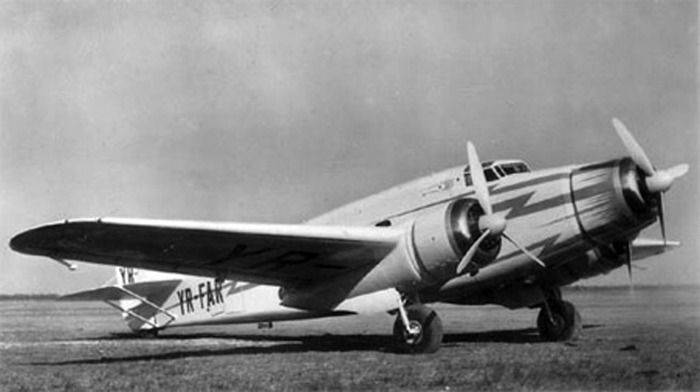
While the factory assembled serial SM.83, the airline "Ala Littori" transferred to start two "seventy-ninths" - S.79T (the only aircraft of this modification of the four produced, remaining in Italy) and a converted bomber. Both cars with seats in the cabin became known as S.79P (passenger). A pair of S.79Р flew to Brazil on the route Natal - Rio de Janeiro, and at the end of 1939, four more SM.83T were added to it. Over the South Atlantic, the three-engine Savoy served passengers until June 1940, when, with the start of the war in Europe, they were called back to Italy, where they became part of military transport aviation.
Even before the passenger versions of the "seventy-ninth", export modification S.79В left the stocks of the company SIAI. S.79 was rightfully considered to be the most modern aircraft of the company, and it was him who Marchetti was going to offer to foreign customers. But, according to the head of the design bureau, a more familiar twin-engine version was needed for export, which the Italian Air Force had already abandoned.
The S.79B (twin-engine) differed from its older three-engine brother primarily in the bow with a glazed scorer and an enlarged keel. To maintain the alignment, the engines were shifted slightly forward, respectively, had to push forward and lift the cockpit, so as not to impair their visibility. The upper part of the cockpit was obtained with this arrangement rather narrow, and the pilots sat one after another.
The "Hump" lengthened, making it more streamlined. Defensive armament reduced by one machine gun, leaving three large-caliber "Breda-SAFAT". The stationary was in the bow, the second on the turret was placed in the "hump" under the sliding panels, and the third - protected the aircraft from the bottom of the gondola.
The prototype S.79В took off for the first time in the spring of the 1936 of the year with the motors “Gnome-Ron” 14K “Mistral Major” on 950 hp (14-cylinder, double row, air cooling). The best aerodynamics partially compensated for the decrease in the total engine power compared to its predecessor, and the characteristics of the bomber remained virtually unchanged. The maximum speed of S.79В was 420 km / h at an altitude of 4530 m, and the range with 1250 kg of bombs reached 1600 km.
At the end of 1936, the first S.79В was taken aboard a ship to Argentina, where a competition was held for a new bomber for the country's Air Force. Rivals "Hawk" became German Ju-86 and American "Martin 139". In order to clearly demonstrate the advantage of his car, the pilot Passaleva famously unscrewed four dead loops in a row on S.79В. The Argentines were simply admired by the “fighter” habits of the Italian bomber and declared the Savoy a winner. The Americans were not going to give up so easily and, having promised more favorable financial conditions, they practically imposed on Argentina the supply of their Martin.
Returning to Italy, the first S.79В continued a demonstration program in front of potential buyers. The aircraft with demonstration flights visited a number of countries - Yugoslavia, Turkey, Spain, Romania, Iraq and even the Soviet Union. The first agreed to buy a twin-engine version of Iraq, ordering five cars in 1937. Soon, six pre-production S.79B left the stocks of the plant in Sesto Kalende. They differed from the prototype by engines Fiat A.80 RC.41 by 1030л.с. and minor modifications of the fuselage in the area of the arrow behind the cabin. For better visibility, additional windows were added to it, and protrusions for the shoulders were made on the sides of the close gargrot. Starting with the third car, additional glazing appeared on top of the nose.
At the beginning of 1938, the Italian crews drove four S.79В to the Iraqi Rashid airbase, and the fifth crashed during the flight. The sixth pre-production S.79B remaining in Italy was used at the company to test the new two-tail fin. Traveling stability of a bomber with such a tail was unsatisfactory, and, bringing the aircraft into its original form, it was sent to Iraq in 1939 instead of the crashed one.
Five Iraqi "Savoy" became part of the 6-th squadron based on Rashid. During the pro-German insurgency of Prime Minister Rashid Ali, in May 1941goda planes did not long participate in battles against the British, but no success for the “hunchbacks” is listed. One "Hawk" was shot down by the English "Gladiator", and the rest were destroyed or badly damaged after a raid by Royal Air Force bombers on the Rashid base.
The largest customer of twin-engine "Hawks" was the royal Romania. In the fall of the 1937 th Air Force, countries ordered an 24 bomber S.79В with IAR-K 14-11 engines. Replacing the engine was simply explained - it was the French "Gnome-Ron" 14K "Mistral Major" in the 900 hp, but produced under a license in Brasov. The aircraft was also distinguished by a mobile 7,7-mm machine gun in the nose and a slightly modified equipment. In 1938, the ordered aircraft arrived in Romania, forming two bomber squadrons.
In the same year, Romania signed a contract for the supply of the following 24 bombers, again with other engines. The Romanian company AR began production under license from the German 12-cylinder liquid cooling engine JMO 211D, which was chosen for the second installment by Savoy. The use of powerful in-line engines for 1220 hp required much more serious alterations to the structure. Tail plumage performed a larger area and reinforced design. The lower gondola was removed completely, and the 13,2 mm caliber machine gun fired down through a special hatch. The same barrel was placed in the "hump", and in the side glazed loopholes installed on the machine gun caliber 7,92 mm.
The plane with the new index S.79JR (Junkers-Romania) turned out to be heavier than the previous options, but due to the powerful engines ahead of them in speed. With a normal take-off weight in 10790 kg, the S.790В accelerated at an altitude of 5000 m to 444 km / h, having a range of 1352 km.
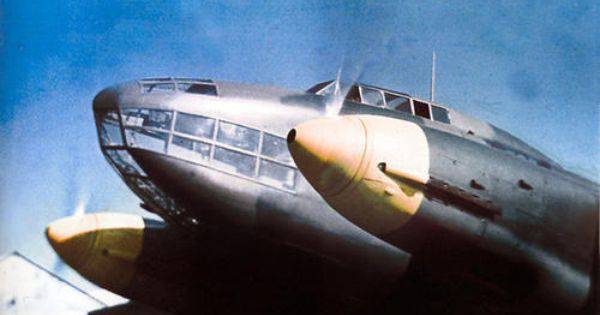
At the beginning of 1939, the first S.790В began to arrive in Romania, but the flight life of this variant began very badly. 11 March 1939 of the year at the airfield in Buzzu is broken together with the crew of the first S.79JR. And in less than a month they lost another bomber. Both engines unexpectedly refused to take off from the plane, and the Savoy crashed to the ground, burying the pilots under the rubble. But further S.79JR (in the Romanian Air Force he had the designation JRS-79В) earned recognition from the crews, being considered a very reliable and unpretentious car.
At the beginning of 1940, they agreed to license the release in Romania of not only the engines, but also the aircraft themselves. The wooden wing was glued in the workshops of the ICAR company in Bucharest, and the fuselage assembly and the final assembly of the engines and equipment were carried out in Brasov at the IAR plant.
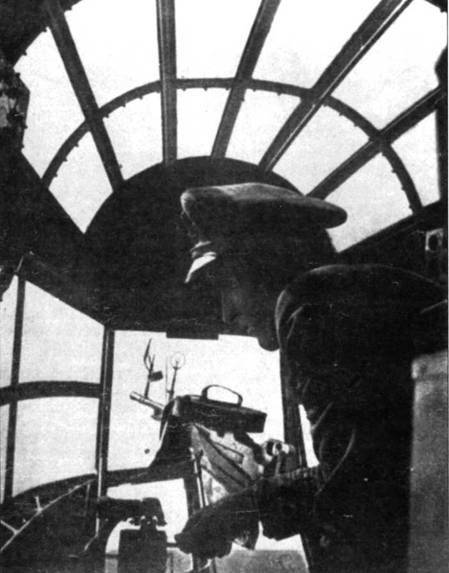
Romania was preparing for the attack on the USSR according to the plan of “Barbarossa” together with Germany. Among the air units that received the 22 order to fly east on June, were all four squadrons of the S.79. The Savoys, with yellow crosses on their wings, supported the offensive of the 3 and 4 of the Romanian armies in Bessarabia, and fought in the fall near Odessa. The "Stalin falcons" managed to knock down some of the cars, several S.79 boarded the forced one on our territory. One bomber was able to be restored, after which it was not used for a short time as a transport (in September, the 1941 aircraft was crashed during landing).
The growing losses, lack of spare parts and the cold Russian winter forced us to withdraw all Savoy squadrons back to Romania for re-formation. Most S.79V removed from service, transferring to transport parts.
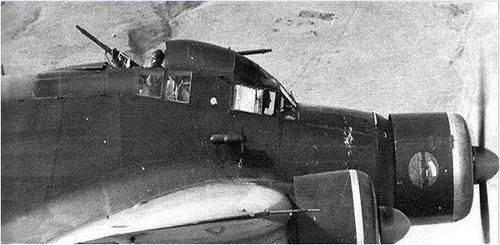
After the re-formation of the four squadrons, only three came out, which returned to the Eastern Front. Crews immediately came to Stalingrad, where they suffered significant losses. The thinned squadron was re-armed on the Ju-88-4 bombers, and the surviving Savoys returned home.
A steep change in the life of the Romanian crews came 23 August 1944 of the year - Romania capitulated, declaring war to its recent ally of Germany. The surviving aircraft now obeyed the command of the Soviet Air Force, attracting to various combat missions.
Yugoslavia ordered 1938 bombers for their air forces in the middle of 45. In order to quickly fulfill an export order, first sent 30 ready-made Savoy intended for the 10 regiment to Belgrade. In the fall of 1939, the remaining 15 machines came from the factory.
In the Air Force of Yugoslavia, the “triple motorists” divided between the 7 th bomber regiment (30 machines) and the 81 st separate bomber group (15 machines). But this bombers almost did not have to fight. Most of the Savoy ground attack aircraft of the Luftwaffe destroyed 6 parking lots on April 1941, when Germany and its allies attacked Yugoslavia. One "Hunchback" flew to Hungary, and in 1942, the Hungarians gave the plane to the Italians, receiving in return a pair of GR.42 fighters.
Another four S.79 crews were able to take to Egypt, and on three aircraft took part of the gold reserves of the country. All four of the Yugoslav "seventy-ninths" entered Egypt as part of the 117 Squadron of the Royal British Air Force and were used as transport workers until 1944.
To be continued ...
Sources:
Kotelnikov V. Savoy (SIAI) S.79 // World of Aviation. 1993. No.1. C.7-13.
Kotelnikov V. Savoy (SIAI) S.79 // World of Aviation. 1993. No.2. C.11-17.
Kolov, S. On the S.79 aircraft family // Wings of the Motherland. 2002. No.2. C.14-16.
Ivanov S. Savoia Marchetti S.79 // War in the air. 2003 No.104. C.2-3, 6-11, 15-33, 46-48.
Obukhovich V., Kulbaka S., Sidorenko S. Planes of the Second World War. Minsk: Potpourri, 2003. C. 319-320.
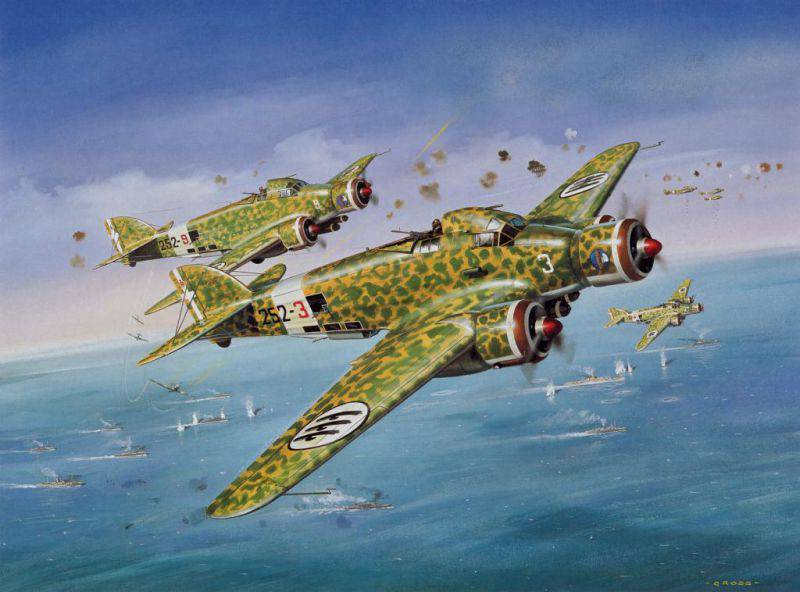
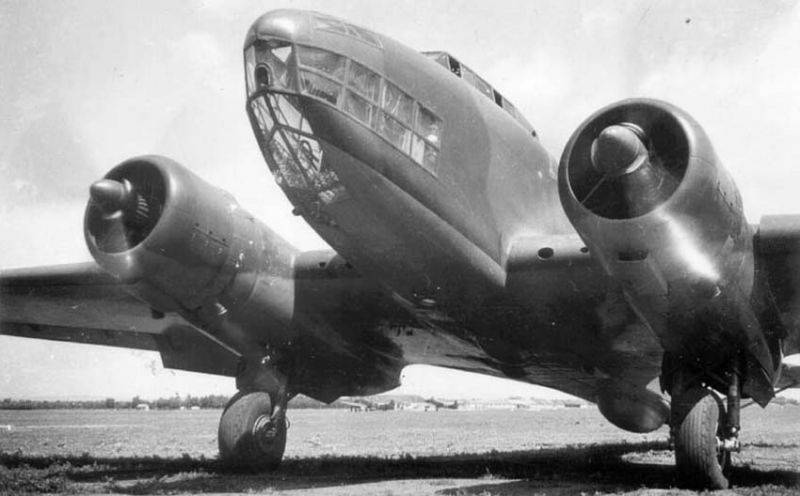
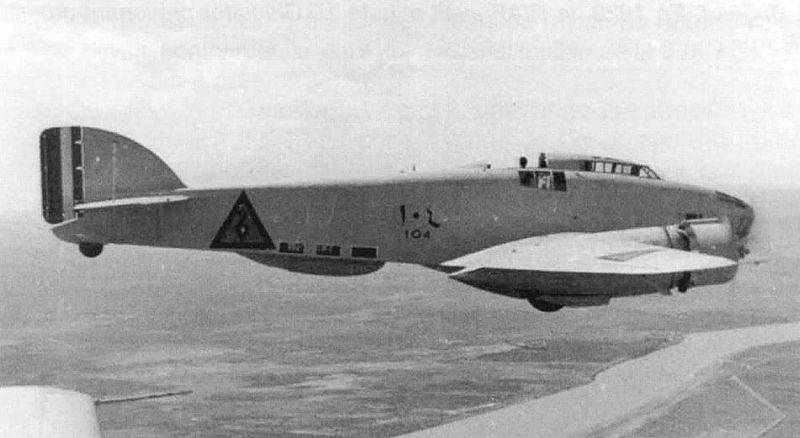
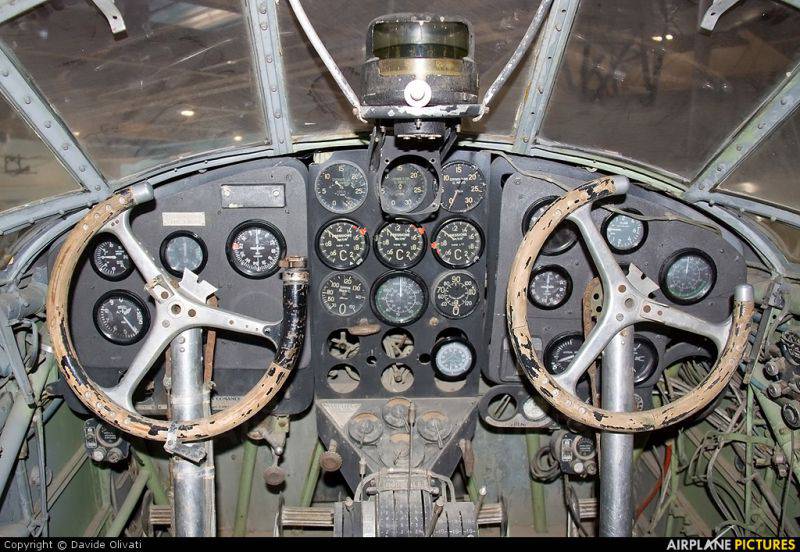
Information